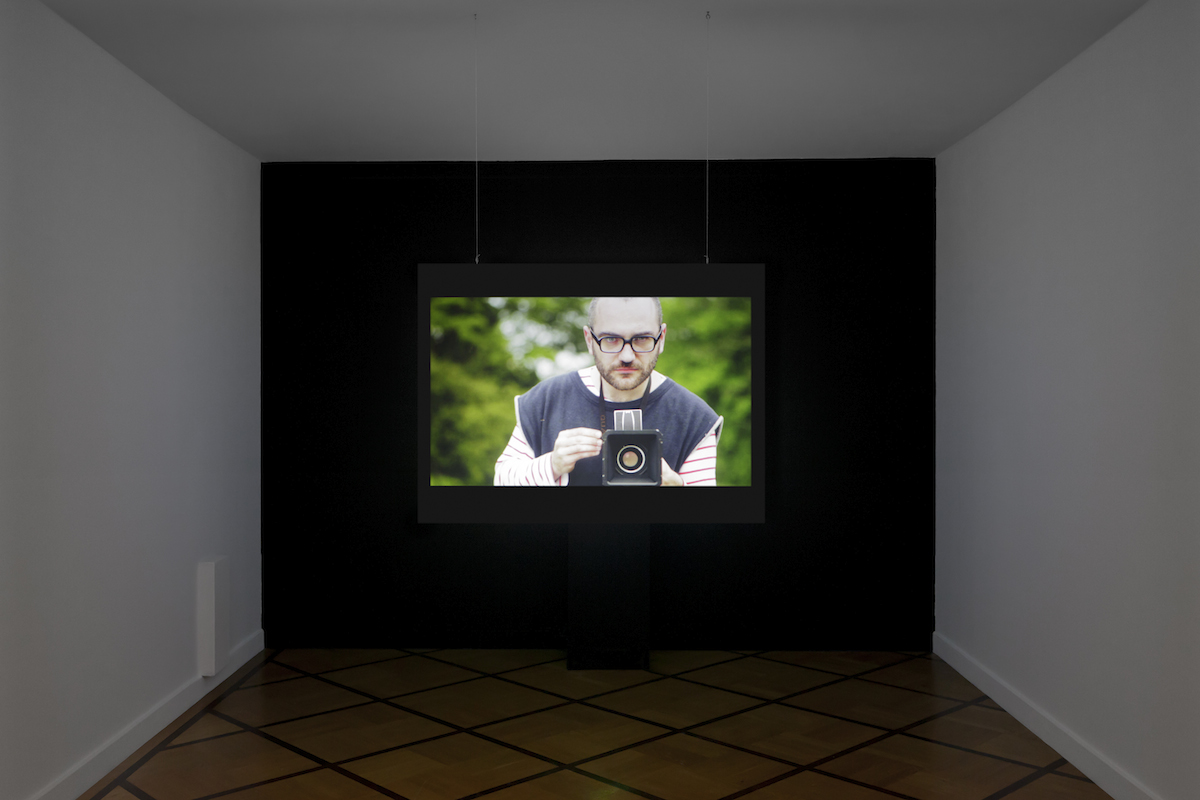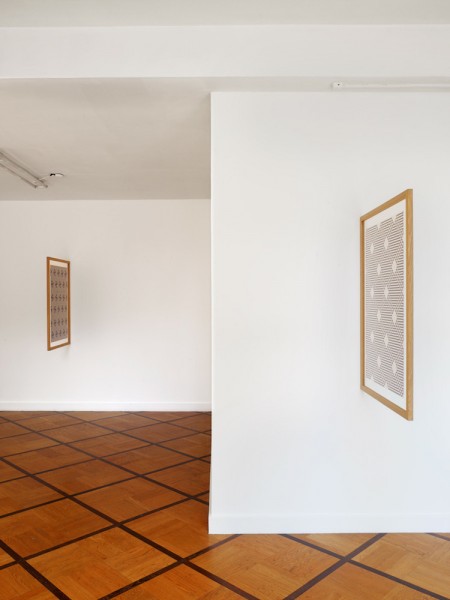Gerard Byrne
For example; a sketch of Five Elevations, 1971-72
Exhibition from May 5 – July 16, 2011
Opening on Wednesday, May 4, from 6pm.

Gerard Byrne’s work is structured around documents – advertisements, daily papers, specialized magazines – dating from after the Second World War, generally from the 1960s and 1970s. After researching archives, Byrne uses these often fragmented and forgotten documents, transforms them and gives them a second life. The new images and settings that emerge from the joined processes of critical deconstruction and reconstruction, often dramatized, examine the codes of artistic or media images and those of representation.
The work of Gerard Byrne resonates between past and present, between our memories, our cultural references and our present time. It is a way of revisiting human history and mythologies through an archive made up of diverse mediums : articles, reports, documentaries, essays, films, tv-shows which constitute the artist’s basic material. This material can as well be borrowed from a discussion on sexual revolution published in a Playboy issue of the 1970s (New Sexual Lifestyles, b/w photographies, 2003) as from an interview with Jean-Paul Sartre on his relationship to women (Homme à Femmes (Michel Debrane), video, 2004), from the numerous accounts and inquiries on the Loch Ness monster published in Scottish local papers (Towards a Gestalt Image : Loch Ness & Fact, 16 mm film and audio CD, 2008) or, more recently, from the 1946 notes taken by American military psychiatrists during their interviews with Nazi leaders awaiting the Nuremberg trial (Untitled Acting Exercise (in the Third Person), HD video, 2008).
On the basis of these excerpts from our recent past, Gerard Byrne elaborates scenarios in which he recombines and exacerbates sociological, psychological or political aspects of the chosen events. In the spirit of Samuel Beckett, he wields the absurd and the discrepancy between things. He mischievously outlines ambiguities, waverings or even comical features of information and its treatment. In a temporal shortcut, and with an emphasis that sometimes recalls Brechtian dramaturgy, Byrne confronts us to memory and to our knowledge of our history, accurate or erroneous, but mostly manipulated by modes of representation and transmission that collide with our reality and our present.
For his exhibition at the Centre d’édition contemporaine, Gerard Byrne presents a new film referring to a 1971-72 piece by Richard Serra he had had access to in the parc of a private collection near London : Five Elevations. This film follows a series of researches on abstraction and minimalism, and among others a previous film installation A thing is a hole in a thing it is not (videos, 2010). This 2010 work has been produced and presented first at the Van Abbemuseum in Eindhoven, then at The Renaissance Society in Chicago, at Lismore Castle Arts, County Waterford, Ireland, and at the 2010 Glasgow International Festival of Visual Art. A thing is a hole in a thing it is not is made up of several short films showing works from the collection of the Van Abbemuseum, which somehow represent the quintessence of American minimalism : with paintings and sculptures by Carl Andre, Donald Judd, Dan Flavin, Robert Morris or Frank Stella. Reinstalled in the Eindhoven halls by Gerard Byrne, the works replay their presence in the museum. The camera records the works as well as the context : museum workers, photographs, cleaners, attendants and visitors. The shots result from large scannings or a back-and-forth between the surrounding space, the apparently insignificant details and the art works themselves, objectified as well. The shift in point of view operated by Gerard Byrne is recontextualized in the field of minimalism by Penelope Curtis in her essay A local address, in Tuxedo Junction, 1960 (catalogue published on the occasion of the exhibition A thing is a hole in a thing it is not at Lismore Castle Arts) : « This means that we are left with the possibility of thinking of Minimalism’s project as both romantic and classical ; as a work of the imagination as well as of manufacturing ; an idea as well as an object ; a dream as well as a result. It is also made clear, however, that Minimalism is not just about us, and our experience, but also about how other experiences are mediated for us, whether in text, voice or imagery. » Besides, the epigraph introducing the catalogue reads : « Assembled and edited by Gerard Byrne upon the achievements of the Minimalists and their critics. »
Gerard Byrne puts the question of the historical or, as here, the artistic transmission of a well known reality, media-covered, phenomenological, or more : iconic. He puts this reality to the proof of its recording or re-recording (film, photography), of its diffusion and its reception : « The idea was to construct for each work a kind of self-awareness of being viewed. I am interested in how the camera tries to construct and elaborate those viewpoints in a filmic sense. I recall Beckett’s Film quoting our fellow Irishman Bishop Berkeley – ”To be is to be perceived”. »
In For example ; a sketch of Five Elevations, 1971-72, the film presented at the Centre d’édition contemporaine, the camera moves around Five Elevations. Through shots using a variety of standards of cinematic grammar, Gerard Byrne assembles a subjective image of this complex sculpture. In the background, the camera records simultaneously and partly a fashion shoot staged by the artist. Despite this double setting, the work of Richard Serra remains the principal character of this fiction, although the confrontation with the fashion shoot transforms Five Elevations in a kind of « Stonehenge », provoking a back-clash between these two temporal dimensions : eternity vs the ephemeral, an ever open question.
Furthermore, the beauty of the two subjects : the Serra and the models, elegant, strict, with geometric movements, is being reinforced by the slow and almost hypnotic back-and-forth of the camera. This continuous sweep, at walking pace, emphasizes the various effects of matter and the mirror-like reflections of the Corten steel, which is only punctuated by the camera crossing the sharp edges of the steel panels. The aestheticism of the piece is even intensified by the steady shots on bucolic details of the garden around – lawn, insects, leaves – until reaching saturation or even embarrassment. Gerard Byrne develops with this new film his research on the way we may perceive and receive historical art works today.

